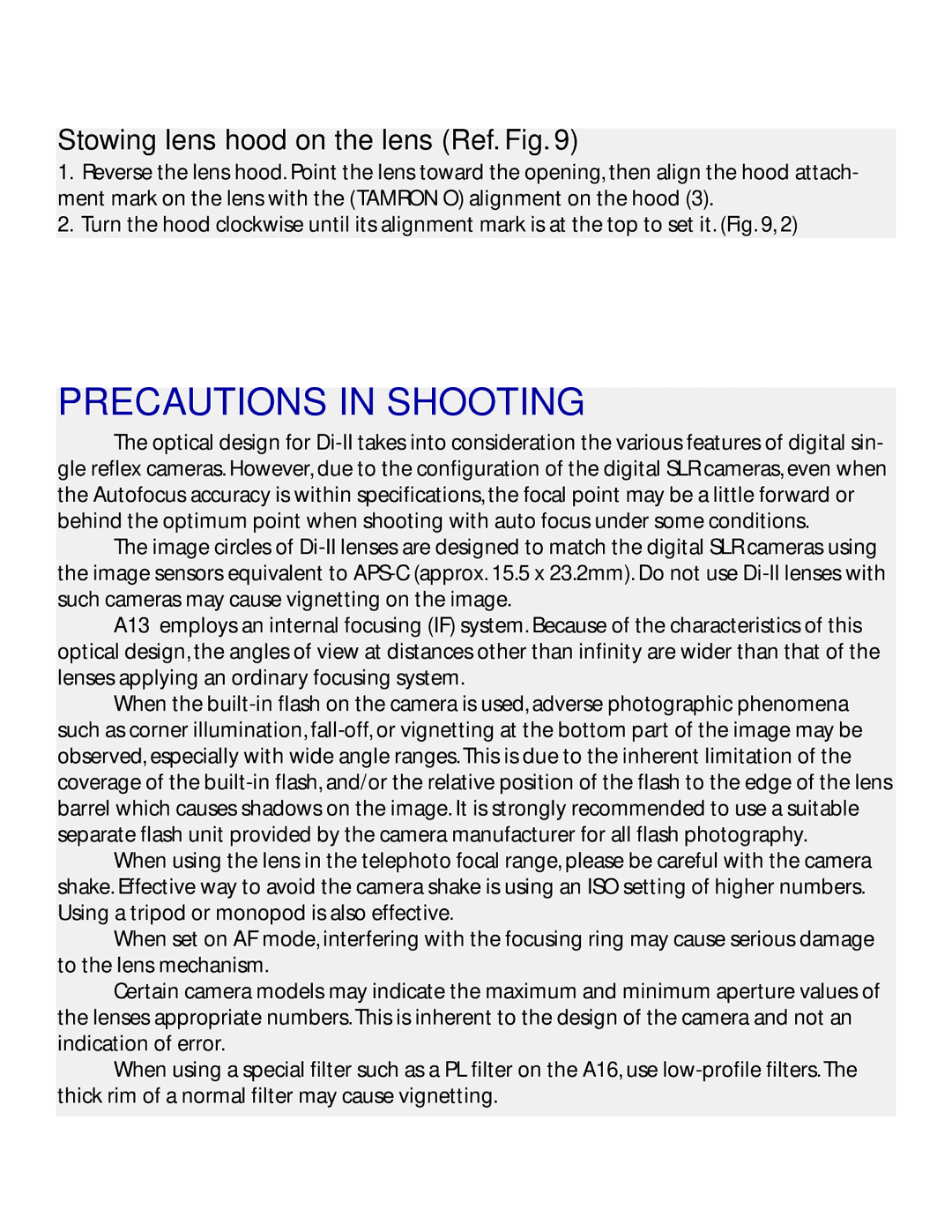AF016NII700, AF016M700, AF016C700 specifications
The Tamron AF016C700, AF016M700, and AF016NII700 are part of the renowned SP (Super Performance) series of lenses, designed to cater to both amateur and professional photographers. These lenses are particularly well-regarded for their versatility and exceptional optical quality, making them popular choices for various photography genres, including portrait, landscape, and macro photography.One of the key features of the Tamron AF016 lenses is their fast and silent autofocus system. Utilizing a combination of an advanced autofocus motor and specialized software, these lenses provide quick and accurate focusing. This technology ensures that photographers can capture fleeting moments without missing an opportunity, particularly useful in dynamic situations such as wildlife or sports photography.
The optical design of the AF016 series incorporates multiple low-dispersion glass elements, which effectively minimize chromatic aberration and improve overall image sharpness. The lenses also boast a multi-layer coating that reduces ghosting and flare, resulting in high-contrast images with vivid colors. This makes them ideal for shooting in bright conditions or against challenging light sources.
The Tamron AF016NII700, in particular, introduces updated features that enhance usability. It boasts a moisture-resistant construction, which is essential for outdoor photographers who often work in varying weather conditions. This feature allows for peace of mind when capturing images in light rain or humid environments.
Another notable characteristic is the built-in image stabilization technology featured in these lenses. It allows for smoother handheld shooting, especially in low-light conditions or when using slower shutter speeds. This makes it easier to achieve crisp images without introducing motion blur, a critical advantage for both professional and hobbyist photographers.
The AF016 series also emphasizes user comfort with ergonomic designs that facilitate extended shooting sessions. The emphasis on a lightweight construction ensures that photographers can carry these lenses for long periods without fatigue, addressing a common concern among those who travel frequently.
In conclusion, the Tamron AF016C700, AF016M700, and AF016NII700 are exceptional lenses that combine advanced optical technology, effective stabilization features, and ergonomic design. They cater to a diverse range of photographic needs while maintaining high standards of quality and performance. Photographers looking for a reliable and versatile lens solution will find the AF016 series an excellent addition to their gear.

